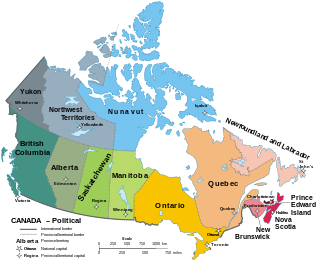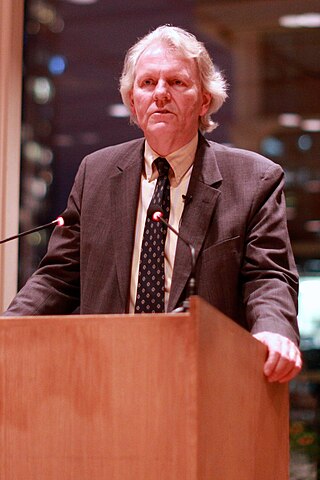The politics of Canada functions within a framework of parliamentary democracy and a federal system of parliamentary government with strong democratic traditions. Canada is a constitutional monarchy where the monarch is head of state. In practice, executive authority is entrusted to the Cabinet, a committee of ministers of the Crown chaired by the Prime Minister of Canada that act as the executive committee of the King's Privy Council for Canada and are responsible to the democratically elected House of Commons.

The Constitution of Canada is the supreme law in Canada. It outlines Canada's system of government and the civil and human rights of those who are citizens of Canada and non-citizens in Canada. Its contents are an amalgamation of various codified acts, treaties between the Crown and Indigenous Peoples, uncodified traditions and conventions. Canada is one of the oldest constitutional monarchies in the world.

Canada has ten provinces and three territories that are sub-national administrative divisions under the jurisdiction of the Canadian Constitution. In the 1867 Canadian Confederation, three provinces of British North America—New Brunswick, Nova Scotia, and the Province of Canada —united to form a federation, becoming a fully independent country over the next century. Over its history, Canada's international borders have changed several times as it has added territories and provinces, making it the world's second-largest country by area.
Canadian federalism involves the current nature and historical development of the federal system in Canada.

The Canada Health Act, adopted in 1984, is the federal legislation in Canada for publicly-funded health insurance, commonly called "medicare", and sets out the primary objective of Canadian healthcare policy.
Equalization payments are cash payments made in some federal systems of government from the federal government to subnational governments with the objective of offsetting differences in available revenue or in the cost of providing services. Many federations use fiscal equalisation to reduce the inequalities in the fiscal capacities of sub-national governments arising from the differences in their geography, demography, natural endowments and economies. The level of equalisation sought can vary, however.
The Constitutional debate of Canada is an ongoing debate covering various political issues regarding the fundamental law of the country. The debate can be traced back to the Royal Proclamation, issued on October 7, 1763, following the signing of the Treaty of Paris (1763) wherein France ceded most of New France to Great Britain in favour of keeping Guadeloupe.
The Canada Health and Social Transfer (CHST) was a system of block transfer payments from the Canadian government to provincial governments to pay for health care, post-secondary education and welfare, in place from the 1996–97 fiscal year until the 2004–05 fiscal year. It was split into the Canada Health Transfer (CHT) and Canada Social Transfer (CST) effective April 1, 2004, to provide greater accountability and transparency for federal health funding.
The Institute for Research on Public Policy is an independent, national, bilingual, not-for-profit organization based in Montreal, Quebec. Its mission is to "improve public policy in Canada by generating research, providing insight and informing debate on current and emerging policy issues facing Canadians and their governments." It publishes peer-reviewed research and acts as a convenor of policy debates by organizing conferences, round tables and panel discussions among stakeholders, academics, policy-makers and the general public. It is also the publisher of Policy Options magazine and the home of the Centre of Excellence on the Canadian Federation.
Asymmetric federalism or asymmetrical federalism is found in a federation or other types of union in which different constituent states possess different powers: one or more of the substates has considerably more autonomy than the other substates, although they have the same constitutional status. This is in contrast to symmetric federalism, where no distinction is made between constituent states. As a result, it is frequently proposed as a solution to the dissatisfaction that arises when one or more constituent units feel significantly different needs from the others, as the result of an ethnic, linguistic or cultural difference.
Thomas Joseph Courchene, known as Tom Courchene, is a Canadian economist and professor.
Local government in Canada can be defined as all elected local authorities which are legally empowered to make decisions on behalf of its electors, excluding the federal government, provincial and territorial governments, and First Nations, Métis and Inuit governments. This can include municipalities, school boards, health authorities, and so on.

The monarchy of Canada forms the core of each Canadian provincial jurisdiction's Westminster-style parliamentary democracy, being the foundation of the executive, legislative, and judicial branches of government in each province. The monarchy has been headed since September 8, 2022 by King Charles III who as sovereign is shared equally with both the Commonwealth realms and the Canadian federal entity. He, his consort, and other members of the Canadian royal family undertake various public and private functions across the country. He is the only member of the royal family with any constitutional role.

Canada has access to all main sources of energy including oil and gas, coal, hydropower, biomass, solar, geothermal, wind, marine and nuclear. It is the world's second largest producer of uranium, third largest producer of hydro-electricity, fourth largest natural gas producer, and the fifth largest producer of crude oil. In 2006, only Russia, the People's Republic of China, the United States and Saudi Arabia produce more total energy than Canada.
The Dominion-Provincial Student Loan Program was the first federally funded student loan program accessible to university students in Canada.
Transfer payments are a collection of payments made by the Government of Canada to Canadian provinces and territories under the Federal–Provincial Arrangements Act. Chief among these are the Canada Social Transfer, the Canada Health Transfer and equalization payments. The last of these can be spent however the receiving provinces see fit, while the first two are intended to support social and health services respectively.
In Canada, the federal government makes equalization payments to provincial governments of lesser fiscal capacity so that "reasonably comparable" levels of public services can be provided at similar levels of taxation. Equalization payments are entrenched in the Constitution Act of 1982, subsection 36(2).

Government in Spain is divided into three spheres or levels: the State itself, the regions or autonomous communities and local entities. These levels are not hierarchical, meaning there is no supremacy or primacy of one over the other, but rather they are separately defined by their jurisdictional powers.
Hourglass Economy is an economy that produces more upper and lower classes, causing a decline in the middle class. An example would be during the Industrial Revolution when the introduction of efficient machinery created stratification of the classes with more lower paying unskilled jobs. This can be seen when the peak of a particular business model is growing and the antapex is growing drawing the middle in tighter and tighter.

Michael J. Prince is a Canadian political scientist and public policy and administration scholar. Prince is the Lansdowne Professor of Social Policy at the University of Victoria in Canada.






